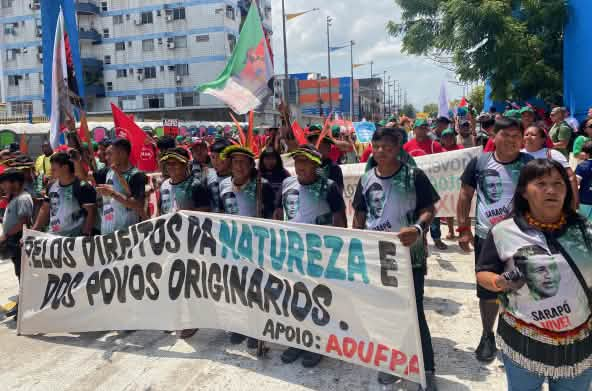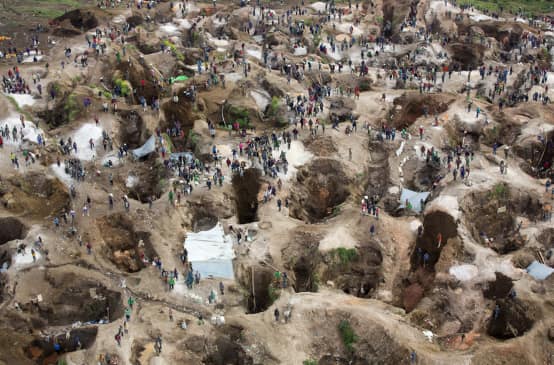Completed campaign
Save the coelacanth bay
This fish really is a biological sensation. Thought to have died out 65 million years ago, some of these living fossils are still swimming around the African coast. But their Marine Protected Area is threatened by plans for a deepwater port. Please demand the protection of the coelacanth bay.
This fish really is a biological sensation. Thought to have died out alongside the dinosaurs 65 million years ago, some of these living fossils were discovered to still be swimming in the tropical waters of Tanzania. Here, at Mwambani Bay, the Tanga Marine Park for Coelacanths (pronounced see-la-kanth) was created in 2009. But now plans to build a deepwater port pose a great threat to the fish's habitat and even the existence of its entire local population.
Tanzania has made a commitment to the protection of species
In order to build a deepwater port, the Tanzanian port authority (TPA) is planning to deepen the shallow bay immensely.These construction works would destroy the sensitive water protection area made up of coral reefs, mangroves and coastal forests. The local highly endangered coelacanths would probably not survive these measures - even though they actually enjoy a particularly high conservation status according to the international CITES agreement.
Please write to the Tanzanian port authority and the government urging them to respect the habitat of the endangered coelacanth.
The coelacanth was deemed to be extinct until it was rediscovered alive near the African coast in 1938. Many scientists esteem this primeval fish to be the last survivor of a group of animals which developed into four-legged vertebrates millions of years ago.
The coelacanth's physique is quite remarkable: it grows up to two metres long and can weigh up to 90 kilogrammes. Furthermore it maintains its youthful appearance up to 100 years.
There are only two sites besides the Tanzanian coast where coelacanths are known to live: around the Comoros near Madagascar and near Sulawesi, Indonesia. Fishermen try to avoid the coelacanth as a bycatch. Its oily meat has an awkward taste to it and in addition entails a laxative effect.
Forced resettlement by the Tanzanian Port Authority
It is not only animals and the environment that are suffering from the TPA's plans. Thousands of inhabitants of the surrounding villages are also severely affected. 200 families have already been involuntarily resettled. Only a minority received the promised compensation.
The TPA has already started the relocations as they hope for an immense increase in price for the building ground.
At the same time the deepwater port at Mwambani Bay is a highly controversial subject and it even lacks economic sense. This is why the World Bank actually has withdrawn its support for this project. Ecological and economic nonsense – this is how the ministry of environment and the Tanzanian chamber of trade also describe the TPA's plans. For there are substantially more tolerable alternatives – for the environment as well as for the Tanzanian people, for example the development of the already existing port in Tanga only five miles away. The port authority however continues to hang on to the new construction at Mwambani Bay and is currently looking for new investors.
To:
President Jakaya Mrisho Kikwete,
Office of the President
P.O. Box 9120
Dar es Salaam
Tanzania
Fax: +255 22 2113425
Prime Minister Mizengo Kayanza Peter Pinda,
Office of the Prime Minister
Permanent Secretary
P.O.Box 3021
Dar es Salaam
Tanzania
Director General TPA: Mr. Ephraim Mgawe,
Chairman TPA: Mr. Raphael Mollel,
P.O.Box 9184, Dar Es Salaam, Tanzania
Your Excellencies,
it is with great concern that I am observing the TPA plans for building a harbour at the Mwambani Bay. Although legally required, no environmental impact assessment has been conducted so far. Implementing these plans would infringe the conservation status of the Marine Protected Area (MPA) established in 2009. The population of coelacanths found at the Mwambani Bay would quite certainly not survive the harbour construction. However, this fish is classified on the Red List of Threatened Species as being highly endangered and enjoys a particular conservation status according to CITES I.
In order to construct the planned deepwater port, coral reefs, mangroves and coastal forests along the bay would have to be destroyed. These ecosystems are very species-rich and prevent flooding.
Contrary to common democratic practices, plans for harbour construction were made without prior consultation of the local population or other competent authorities. Even the responsible agency, the National Environment Management Council (NEMC), was not involved in the decision-making process. An independent expert's assessment of the nautical routes and port users shows that the construction of a new port at Mwambani Bay lacks economic reason. Instead, the development of the existing port in Tanga is recommended. Here an appropriate infrastructure is already available.
Associated to the construction plans, unrightful displacement of local people has already taken place. The promised compensations for their loss of homes and land were only partially paid. More inhabitants of the surrounding villages are threatened by expulsion due to the construction of the harbour. This procedure violates existing Tanzanian land rights.
In the light of the outlined non-transparent decision-making processes and the extensive violations of the law connected to the planned construction of this port I ask you
– to dismiss the plans for the construction of a port at Mwambani Bay and rather take into account the alternatives presented by experts.
– to respect and ensure the conservation status of the coelacanth and the Marine Protected Area (MPA) at the Mwambani Bay
– to put an end to the repression of the local people and to compensate already expropriated families in due manner.
Yours faithfully

